Check out all of the baby rhinos in action as they’re introduced to Kilimanjaro Safaris, and take a look at how Disney cares for them.
Species Survival Plan
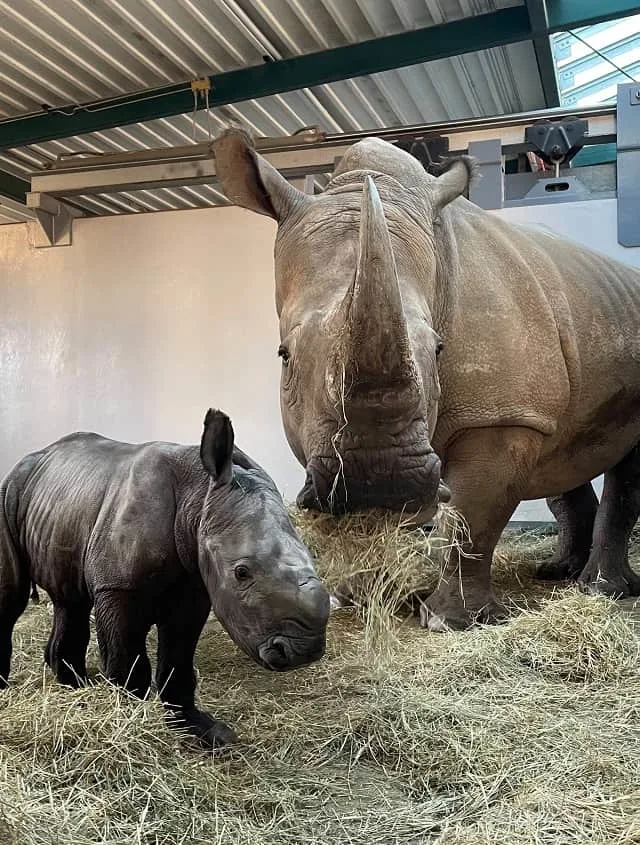
Many factors influence the pairing rhinos through the Species Survival Plan. The entire process is overseen by the Association of Zoos and Aquariums. This ensures responsible breeding of endangered and threatened species. In addition, it’s crucial to find genetic diversity. This helps assure a healthy bloodline.
Animal Nutrition
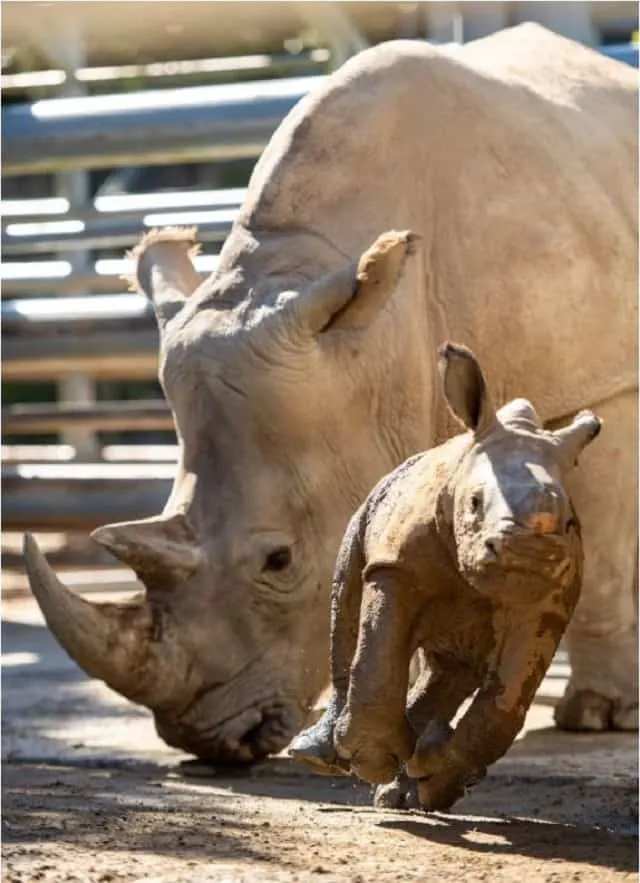
Disney’s animal nutritionists monitor the diets of all their animals, ensuring each one gets the needed nutrients. Once rhinos are paired, adjusted diets take place as needed for pregnancy, lactation and growth.
Endocrinology
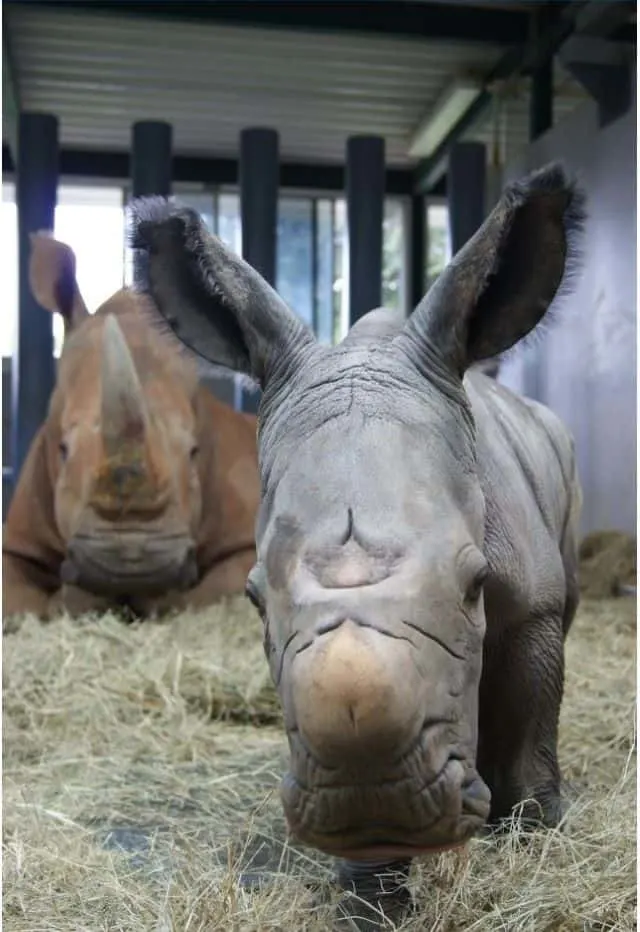
Before any introductions are made, Disney’s team of animal endocrinologists monitor specific hormone patterns. Tracking is possible because the rhinos are trained to voluntarily participate in their own care.
This allows Disney’s team to collect blood samples and feces to monitor hormones related to ovulation and pregnancy. Last, breeding takes place in a very controlled environment.
Veterinary Care
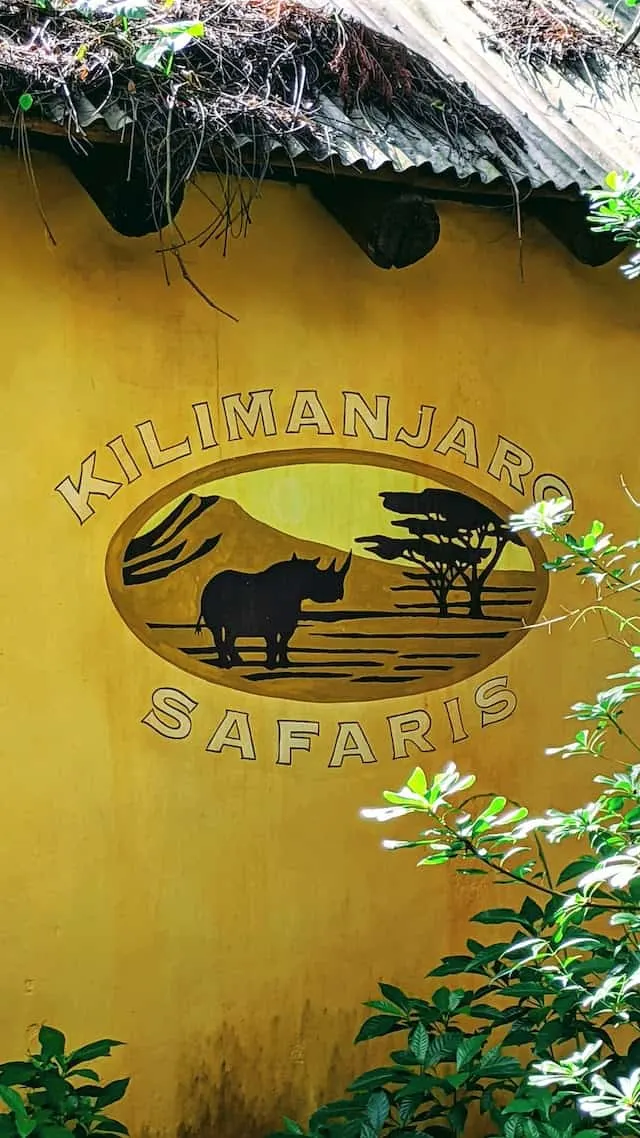
Disney’s animal health team works with endocrinologists and animal keepers to monitor the animals throughout their long pregnancies. Did you know that rhinos have one of the longest gestation periods of any animal? It lasts 16 to 18 months!
During this time, the health of the mom and baby receive regular checkups and ultrasounds. Through these ultrasounds, the team watched Logan grow from a few cells to the 160 pounds she weighed at birth.
Rhinos have one of the longest gestation periods of any animal!
Animal Care and Training
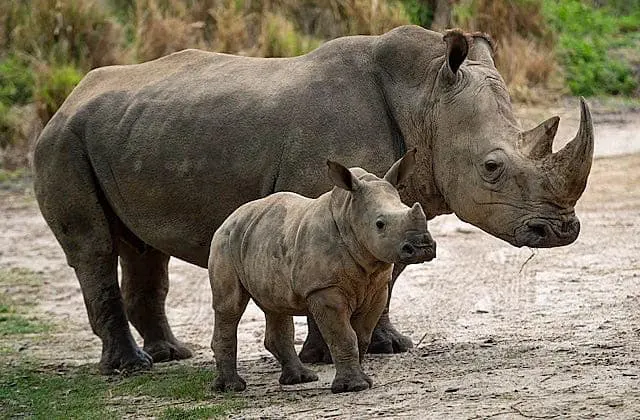
Once the rhino calf is born, mom and baby spend months backstage bonding. During this crucial time, the animal keepers make sure the calf is nursing and growing. This time also allows keepers to focus on each animal and teach important training behaviors for savanna life.
Once the calf is ready, animal keepers work with the rhino calves to slowly introduce them to the rhino crash and other animals on the savanna.
Rhino Conservation
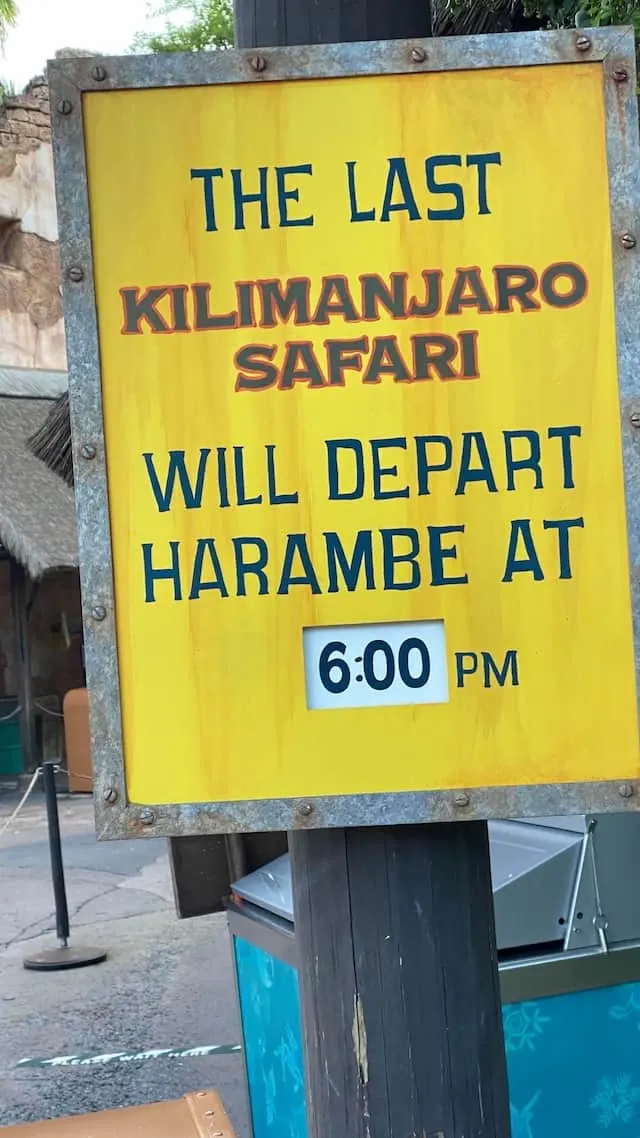
As a social species, rhinos learn behaviors like sparring and wallowing in the mud from each other. Not only that, but they enjoy interacting with one another. Each successful rhino birth assists Disney in understanding rhino fertility and habits.
Disney gives a higher quality of care for these wonderful creatures on a day-to-day basis. Insights learned help future rhinos born in managed care as well as their counterparts found in their range countries.
Baby Rhinos
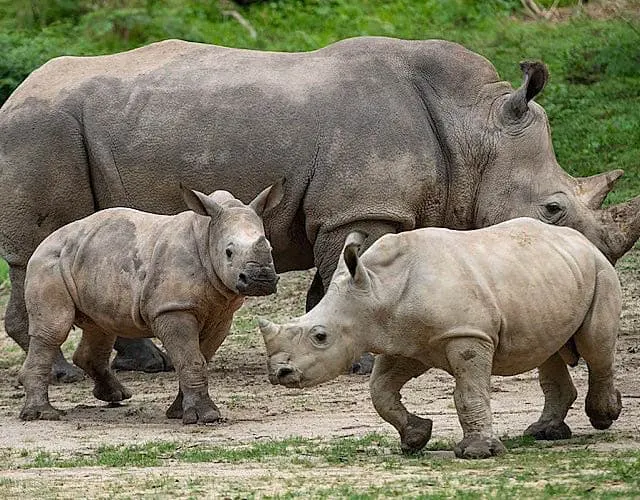
After four months of bonding behind the scenes, a special milestone occurred recently for Mylo and Jao. They were both released to the Harambe Wildlife Reserve savanna.
Last, but certainly not least, mother Lola and father Dugan have a baby girl. Animal Care Experts blended their names together and came up with the name Logan for her. Check out more information on their reunion and on the baby name reveal HERE.
Triple Baby Rhino Reunion

It takes a lot of teamwork to bring one rhino to the savanna! Now, for the first time in the park’s history, Disney releases three baby rhinos! As incredible as it is to see three rhino calves roaming around together, it’s also amazing to read about how Animals, Science and Environment team began this process more than two years ago.
The coordination of scientists, veterinarians, animal keepers and so many other cast members was crucial to this success story.
For the first time in history, Disney releases three baby rhinos!
This week, four-month-old Logan’s made her debut on the savanna! It’s the first time rhino siblings Ranger, Mylo and Logan were out together.
Do you love Disney’s baby animals? Have you seen them recently on the Safari? Please share your thoughts in the comments below or on our KTP Facebook Page.
Source: Disney Parks Blog

Discover more from KennythePirate.com
Subscribe to get the latest posts sent to your email.



What do you think?